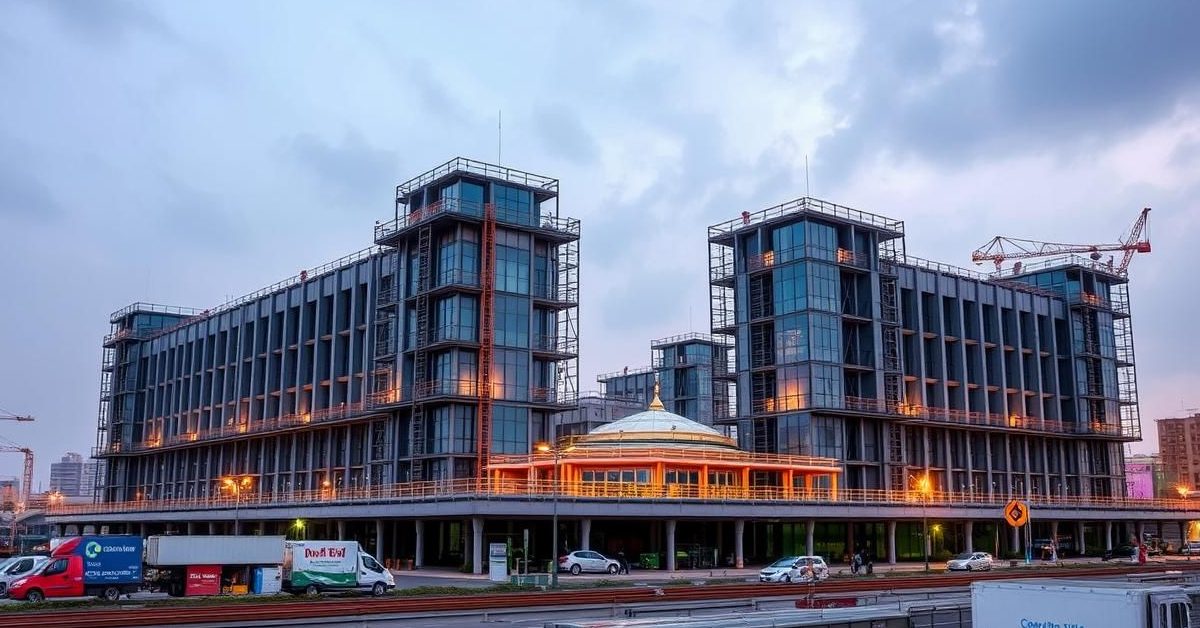India’s Investment Puzzle: Why Private Capital Expenditure Remains Elusive
A prevailing concern within India’s economic corridors, recently articulated by Ram Singh, an external member of the Reserve Bank of India’s (RBI) Monetary Policy Committee (MPC), casts a long shadow over the nation’s growth trajectory. Despite optimistic projections and a general sense of economic resilience, private investment – the bedrock of sustained prosperity and job creation – continues to exhibit a disquieting sluggishness, failing to ignite with the expected vigor. This observation by a key figure in India’s central banking system highlights a critical challenge demanding urgent attention.
Deciphering the Metrics: Alarming Signals from Corporate Health
Ram Singh’s assessment isn’t based on mere sentiment but on a careful scrutiny of several crucial economic indicators. He points to metrics such as capital expenditure as a ratio of net operating margin, a key gauge of a company’s willingness and ability to reinvest its profits. A lower ratio here suggests that businesses are either not generating sufficient surplus or are hesitant to deploy it for expansion. Furthermore, the rate of bank credit flowing to corporates, a vital lifeline for project financing, remains subdued. This indicates either a lack of demand from businesses for fresh loans or a cautious approach from banks. Compounding these worries, the debt-to-equity ratios for many firms are lower than what might be desirable for an economy poised for significant growth, signaling an unwillingness to leverage for expansion, perhaps due to past experiences with high debt or present uncertainty.
Beneath the Surface: Unpacking the Roots of Reluctance
The hesitation from the private sector to commit to new, large-scale investments is multifaceted. One primary factor often cited is capacity utilization. If existing production facilities are not running at or near full capacity, there’s little incentive for companies to invest in new plants or machinery. This suggests a demand-side challenge, where consumer spending or export orders might not be strong enough to necessitate significant capacity additions. Global economic headwinds also play a significant role. Geopolitical tensions, volatile commodity prices, and a general slowdown in global trade dampen export prospects and create an environment of uncertainty, making businesses wary of long-term commitments.
Government’s Counterbalance: A Necessary but Insufficient Push
In stark contrast to the private sector’s cautious stance, the Indian government has aggressively ramped up its capital expenditure. Initiatives under the Union Budget, focused on colossal infrastructure projects – from national highways and expressways to modernizing railways and developing new ports – have provided a much-needed impetus. Flagship programs like the National Infrastructure Pipeline and PM Gati Shakti are channeling substantial public funds into creating foundational assets. This robust public spending acts as a crucial counter-cyclical measure, generating employment, stimulating demand for raw materials like steel and cement, and crowding in some private investment in ancillary sectors. However, while essential, public capex alone cannot sustainably drive the economy to its full potential; private investment is critical for widespread job creation, innovation, and competitiveness.
The Broader Economic Implications: Beyond Just Numbers
The lingering weakness in private capital expenditure has far-reaching implications for India’s ambitious economic aspirations, including the vision of “Viksit Bharat” (Developed India). Without sustained private investment, the creation of high-quality jobs, particularly in manufacturing and advanced services, can stagnate. It also hampers the adoption of new technologies and best practices, potentially impacting India’s global competitiveness. Furthermore, a lack of supply-side investment can, ironically, contribute to inflationary pressures in the long run if demand outstrips stagnant production capacity. For the Reserve Bank of India, this presents a complex challenge, as monetary policy tools alone may not be sufficient to spur investment when the underlying issues are structural or confidence-related.
Paving the Path Forward: Igniting the Private Sector Engine
Revitalizing private capex requires a concerted, multi-pronged approach. Beyond just managing interest rates, it necessitates strengthening domestic demand through sustained consumer confidence and income growth. Further structural reforms that improve the ease of doing business, enhance regulatory predictability, and streamline land and labor laws could unlock significant private capital. Addressing the concerns of the banking sector regarding non-performing assets (NPAs) and improving credit flow to Micro, Small, and Medium Enterprises (MSMEs) are also vital. Ultimately, fostering an environment of unwavering confidence, where businesses feel secure in making long-term bets on India’s growth story, will be paramount in transforming the current sluggishness into a robust, self-sustaining investment cycle. The insights from MPC member Ram Singh serve as a timely reminder of this critical economic juncture.














